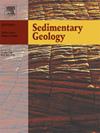量化 OAE1a 对法国东南部浅海生态系统的古生态影响
IF 2.9
2区 地球科学
Q1 GEOLOGY
引用次数: 0
摘要
始新世早期气候和环境的不稳定性随着大洋缺氧事件(OAE)1a的发生而达到顶峰,该事件导致了深海环境中黑色页岩的沉积,以及δ13C值典型的先负后正的偏移。在 Vercors(法国南部),在 OAE1a 之前和同时,Urgonian 平台也得到了发展,但这一古环境危机对底栖生态系统生态学的影响尚有待量化。我们收集了实地数据和岩相数据,以确定序列边界和最大洪水面,并对研究区域内的四个地点进行了生物地层年代测定和关联。我们绘制了一条综合 δ13C 曲线,确定了文献中的 C3 至 C7 同位素段,将 OAE1a 的起始时间精确定位在富含芦管双壳类动物的乌尔贡面最后一次沉积的上方。此外,还利用薄片点计数数据来量化样本中的分配体比例,并追踪生态系统的生态变化。对点计数数据的主成分分析有助于确定生态层:在 OAE1a 之前直至 C7 段,生态系统中占主导地位的是多样化的光生动物群,包括有孔虫、绿藻和底栖有孔虫;而在 OAE1a 之后,生态系统中形成了多样性较低的异生动物群,包括双壳类和有孔虫。为了探索这种变化的诱因,对元素地球化学数据进行了主成分分析,结果表明,营养物质和碎屑输入的增加是生态调整和生态系统生物多样性变化的主要诱因。特别是在 OAE1a 之后,碎屑和营养物质输入的增加导致光生动物被更适应这些压力条件的异生动物群所取代。这项研究将古环境恶化与古生态变化直接联系起来,并量化了生态系统的适应程度。本文章由计算机程序翻译,如有差异,请以英文原文为准。
Quantifying paleoecological impact of the OAE1a on shallow marine ecosystems from southeastern France
Climate and environmental instability during the early Aptian culminated with the unfolding of the Oceanic Anoxic Event (OAE) 1a, which resulted in the deposition of black shales in deep marine settings and a typical negative spike followed by a positive excursion in δ13C values. In Vercors (southern France) the Urgonian platform developed prior to and coeval to the OAE1a, but the impact of this paleoenvironmental crisis on the ecology of benthic ecosystems is yet to be quantified. We gathered field and petrographic data to identify sequence boundaries and maximum flooding surfaces that are biostratigraphically dated and correlated between four localities within the study area. A composite δ13C curve is built where the C3 to C7 isotope segments from the literature are identified, pinpointing the onset of the OAE1a above the last episode of deposition of Urgonian facies rich in rudist bivalves. Furthermore, thin section point counting data are used to quantify the proportion of allochems in samples and to trace changes in the ecology of ecosystems. The principal component analysis of point counting data helps define ecological tiers: a diversified, photozoan association with rudists, green algae, and benthic foraminifera dominated ecosystems before the OAE1a and up to the C7 segment, while a less diversified heterozoan association with bryozoans and crinoids developed after the OAE1a. To explore the triggers for this change, the principal component analysis of elemental geochemical data highlights an increased nutrient and detrital input as major triggering mechanisms for ecological adjustments and changes in the biodiversity of ecosystems. In particular after the OAE1a, an increase in detrital and nutrient input leads to the replacement of photozoan by heterozoan assemblages more adapted to these stressful conditions. This research directly links paleoenvironmental deterioration to paleoecological changes and quantifies the amount of adaptation of ecosystems.
求助全文
通过发布文献求助,成功后即可免费获取论文全文。
去求助
来源期刊

Sedimentary Geology
地学-地质学
CiteScore
5.10
自引率
7.10%
发文量
133
审稿时长
32 days
期刊介绍:
Sedimentary Geology is a journal that rapidly publishes high quality, original research and review papers that cover all aspects of sediments and sedimentary rocks at all spatial and temporal scales. Submitted papers must make a significant contribution to the field of study and must place the research in a broad context, so that it is of interest to the diverse, international readership of the journal. Papers that are largely descriptive in nature, of limited scope or local geographical significance, or based on limited data will not be considered for publication.
 求助内容:
求助内容: 应助结果提醒方式:
应助结果提醒方式:


